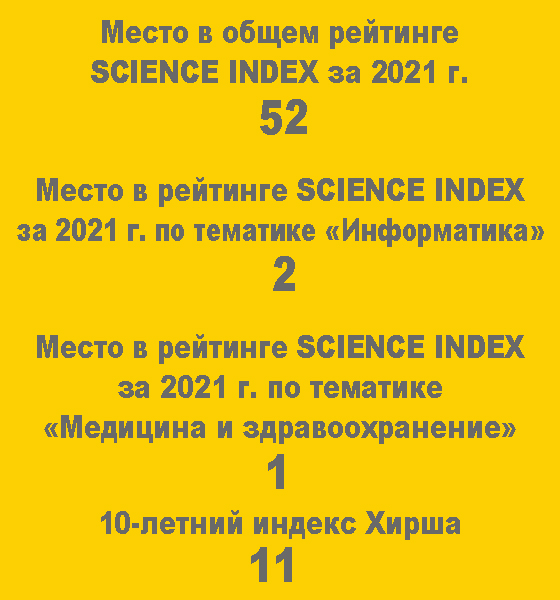Remote monitoring complex for chronic non-communicable diseases DOI: 10.29188/2712-9217-2022-8-1-7-14
- Lebedev G.S. – PhD, professor, Head of the Department of Information and Internet Technologies, I.M. Sechenov First Moscow State Medical University (Sechenov University); Moscow, Russia; https://orcid.org/0000-0002-4289-2102
- Vladzymyrskyy A.V. – MD, PhD, Deputy Director for Research, Research and Practical Clinical Center for Diagnostics and Telemedicine Technologies of the Moscow Department of Health; professor, Department of Information and Internet Technologies, I.M. Sechenov First Moscow State Medical University (Sechenov University); Moscow, Russia; https://orcid.org/0000-0002-2990-7736
- Shaderkin I.A. – MD, PhD, Head of the Laboratory of E-Health, Institute of Digital Medicine, I.M. Sechenov First Moscow State Medical University (Sechenov University); Moscow, Russia; https://orcid.org/0000-0001-8669-2674
- Dudareva V.P. – Head of Management Automation Department, Surgut Municipal Clinical Polyclinic N2; Surgut, Khanty-Mansi Region, Russia; https://orcid.org/0000-0002-1891-0606
 2080
2080 Introduction. Chronic noncommunicable diseases are a significant medical, demographic and socioeconomic problem. Telemedicine technologies are one of the tools to solve it. However, the question of the large-scale application of affordable, patient-oriented technological solutions remains open.
Objective: evaluate the feasibility of the mobile set for monitoring of the health status of patients with chronic non-communicable diseases.
Materials and methods. Design: feasibility study. Acceptability, demand, implementation, feasibility, integration and adaptability were studied. There are 14 patients suffering from high blood pressure or diabetes mellitus are included in an observation group. The telemedicine monitoring kit was used (as preclinical trial). Research methods: clinical, sociological, and statistical.
Results. The base station and medical devices were used for telemonitoring in frame of dispensary observation. The reference level of blood pressure achieved in 100.0% of cases. This is an evidence of the clinical significance. The level of technological defects was minimal (2.3%). A statistically significant achievement and stable retention of physiological parameters reference level were achieve when telemonitoring was carry out for 2 months and more. There is a high level of evaluation of the telemedicine kit quality both by patients and by medical staff.
Conclusions. The overall level of patient adherence to telemonitoring via telemedicine kit is 78.6%. It is expedient to use this set of devices for telemonitoring of the health status of patients with blood hypertension and, potentially, with other chronic non-communicable diseases.
| Attachment | Size |
|---|---|
| Download | 141 KB |


















































